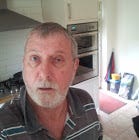John Keats 31 October 1795– 23 February 1821
Melancholy’s lack of zest
written all over his palimpsest:
to die at twenty-five to some
will hardly seem to have been alive,
but for Johnny Keats and the footloose Cavaliers
poetry, music, art, tears were eternal.
They eschewed self-pity, untold fears.
They tried their best to stay alive
In a world without antibiotics.
no easy crossing of the river Lethe
no seeking out of empty-headed
oblivion.They preferred to breathe
in the clear air of Hampstead heath.
for Johnny Keats and the loose Cavaliers
did not, and could not,. measure out life in years
but sought to rise to the attainment of that rarest
of rare orchids, love. What will survive of us.
For Johnny Keats and the footloose Cavaliers
life was so much more
than just the passing of the years.
Keats, the poet-physician, balanced
his surface understanding of anatomy
with the hidden mysteries of the body.
Alchemical intuitions unified body and soul.
Intuitions borne out by the mysteries of quantum physics.
Time was such a slippery beast: for Johnny Keats
and the footloose Cavaliers
they writ their poems in water.
